Living in an urban flat with no access to outdoor space and yearn for greenery? Our friends at Ethical.net have got it covered with their guide to how to start a small garden in your apartment.
It may be your dream to live on a smallholding in the countryside, with an acre of land. But if, like so many people, you currently live in a small urban apartment, that dream might feel very far away. The truth is that most of the world’s population lives in cities, and the number of city dwellers continues to grow. We can’t all be farmers. But that doesn’t mean that we can’t grow any of our own food; anyone can start a small garden in their apartment. In fact, it’s something that everyone should do.
If you want to live more sustainably, growing at least some of your own food is a wonderful place to start. It’s a great idea to look out for allotments and community garden schemes in your area, giving access to some food-producing land. And even without such opportunities, you could contact the council or local landowners and start your own scheme. Perhaps you and your neighbours could even club together and create a garden in a common area, or on the roof? In France, the law actually decrees that all new rooftops must be covered either with solar panels or with plants.
Even when these options are not possible, you can still start a small garden in your apartment, where you can begin to take back some control over what you eat.
Why start a small indoor garden?
Even a small indoor garden can be great for both people and planet; you might be amazed by how much difference even a very small garden can make. Benefits include:
- Reducing the amount of food you buy from damaging mono-crop agriculture
- Lowering food miles and reducing your carbon footprint
- Lessening the amount of plastic packaging brought into your home
- Opportunities to reuse plastic, keeping it from the wider environment and prolonging its usefulness
- Recycling food waste by composting at home, keeping it from landfill
And, of course, producing some food in your own home can also save you money.
Choosing where to grow plants in your apartment
Think about:
- Where and for how long the location in your apartment gets full sun
- The proximity to artificial heat-sources, and when these are on
- The average temperatures in the space throughout the year (and how dramatically these fluctuate)
- Ventilation: is the spot very stuffy, or can you create a good breeze
- Accessibility: how easy it will be to reach and maintain your plants.
A light, bright location is best, though many plants prefer not to be in direct sunlight all day long. Try to choose a spot that isn’t too close to a heat source like a stove, radiator, or oven, or where temperatures will rise and fall suddenly and dramatically. A little natural ventilation is ideal (i.e, where windows can be opened to create a through-breeze). Finally, consider practicality; you need to be able to get to your plants easily to tend and water them, and their containers shouldn’t impede other activities within your home.
Maximising the number of plants you can grow indoors
When considering how much to grow and where to grow it, it is also important to think about options for maximising growing-space, and which growing systems to use. Often, even in a very small apartment, you can grow a surprising amount of food by considering the following approaches:
Windowsill gardens
This is the simplest, most traditional way to grow food indoors. Window boxes or other small containers can be placed on inside sills, and (depending on regulations where you live) window boxes can potentially be affixed on the outside of your windows, too.
A south-facing windowsill will offer the best light levels and conditions, but you can grow some plants at a window facing any direction. North-facing windows will get less light, but there are a number of shade-tolerant plants that will still grow.
Placing containers on the existing sill is the easiest way to get started, but you could also dramatically increase your growing area by affixing shelves across a window, or with a narrow shelving unit placed on the windowsill to hold more plants.

Credit: Markus Spiske via Unsplash
Vertical gardens
Inside or out, this approach is all about thinking vertically to make the most of the space. You might not think you have any space for container plants, but have you considered the vertical space: up walls, and above other interior features?
Shelving is the simplest form of vertical gardening, and doesn’t even require DIY. Whether placed in a window or against a sunny wall in your room, you can use any old shelving to increase the amount of container plants in your space.

Credit: Federica Galli via Unsplash
But shelving isn’t the only option; other vertical gardening solutions include:
- Growing plants in pockets (for example, in a fabric shoe-organiser hung on a wall or even a door).
- Creating a tower or vertical structure into which plants can be placed. (For example, a planting tower made from old plastic drinks bottles.)
- A structure in which to grow your plants made from, for example, old plastic plumbing pipes or guttering.
- Climbing plants grown up trellis or supports against a sunny wall, from containers at the base.
These are only a few innovative ways to make use of the vertical space in a room when horizontal space is limited.
Hanging gardens
Another way to take advantage of the whole room is to utilise ceiling space. Hanging baskets may drip, but plenty of other leak-free containers could be hung inside to grow medium-sized plants securely. Some indoor gardeners simply hang one or two containers on wall or ceiling hooks, while others have even strung multiple containers like bunting along wire or string.

Credit: Denise Mwaniki via Unsplash
Large containers in a sunny spot
You may think that you are restricted to small containers inside your apartment. But with a well thought out layout, you may be able to place much larger containers in a sunny spot. By using something like an old 55 gallon barrel, you could create a larger planting area for crops like potatoes that typically need a large area. Holes cut in the container’s sides, lined with sacking or similar, can even be used to grow an additional crop like herbs or strawberries.
Stay tuned for Part 2 coming soon and find the original post by Elizabeth Waddington over on the Ethical.net blog here.
Ethical.net is a collaborative platform for discovering and sharing ethical alternatives, whether purchasing from a social enterprise, thrift shopping, or learning how to fix your old phone instead of buying a new one. They aim to make ethical the new normal.

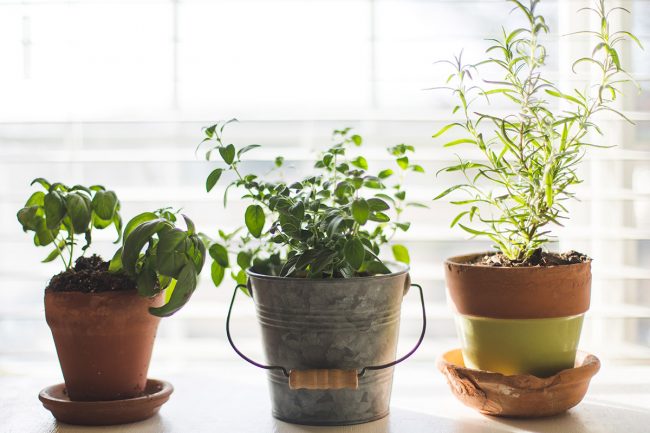

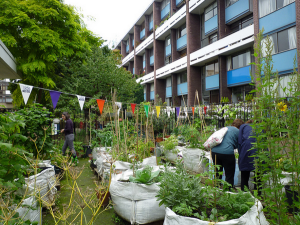
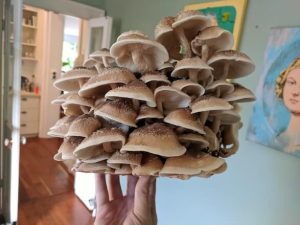
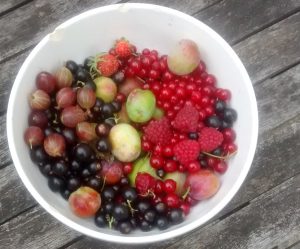
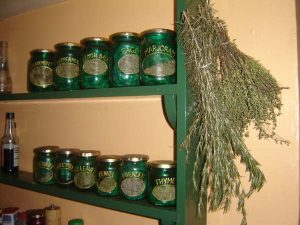

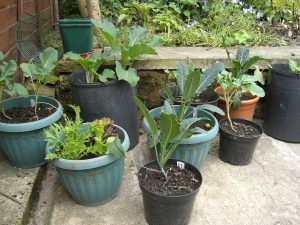
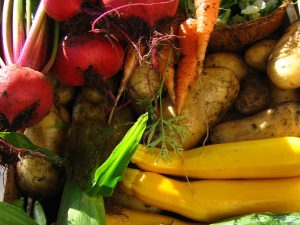
1 Comment
Great. I’m lucky enough to have outside space;bu t still have my windowsill garden in a saucer, where I keep my carrot tops and onion bottoms for a supply of greens to snip over pasta etc. Somewhere I’ve seen a method of growing a trailing tomato plant out of an inverted, cut-off plastic bottle..